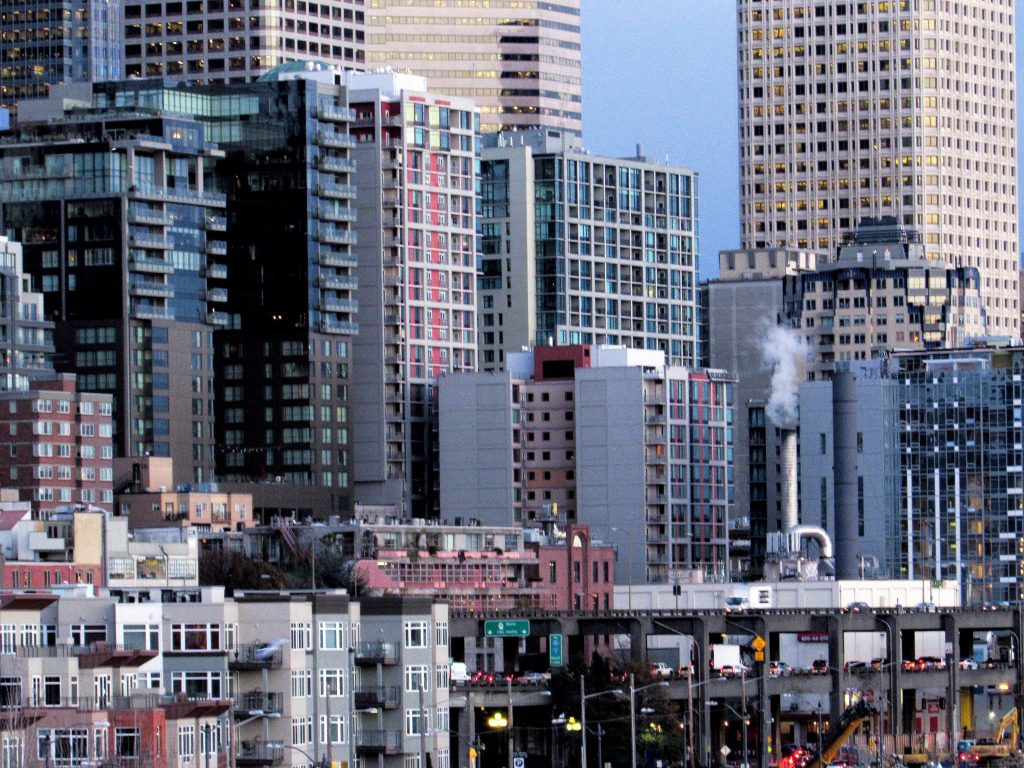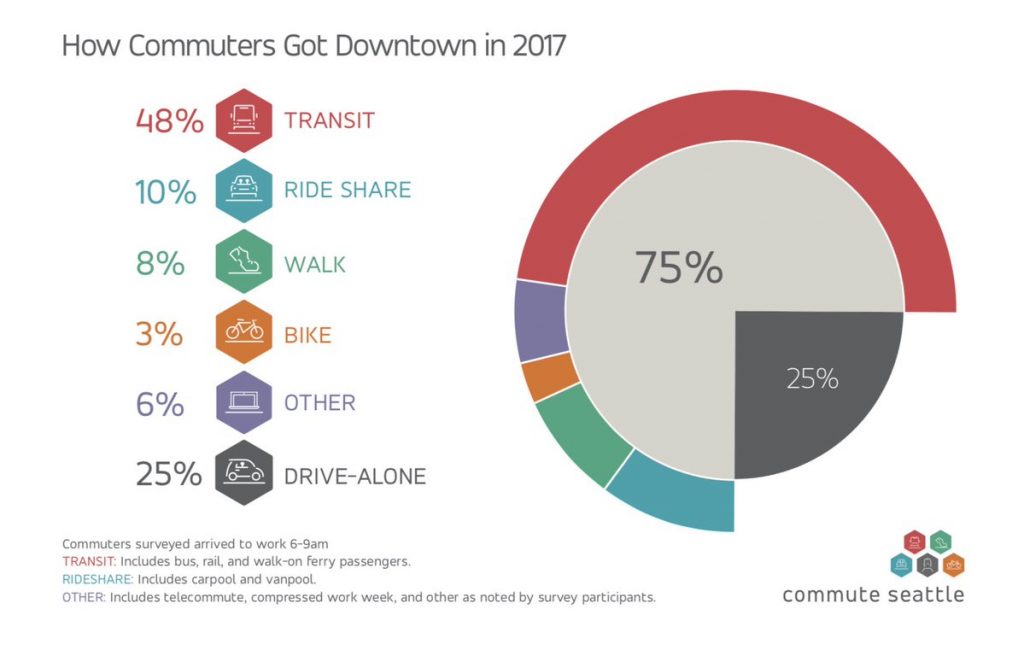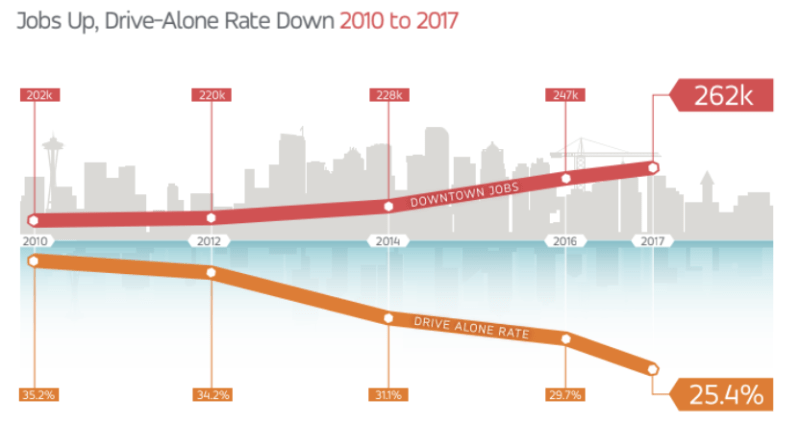
The Downtown Seattle Association (DSA) released their annual State of Downtown report last week where they analyzed the city center’s growth over the past eight years and what we should expect in the coming years. The DSA also reflected on downtown’s performance in 2017 across their three strategic priorities: economic development, the urban experience, and transportation and access.
According to the report, Seattle’s transportation network must move 281,000 workers to and through downtown Seattle daily. With employers choosing to relocate or expand to downtown, so are some of their employees. There are an average of 1,000 new people moving to Seattle every week, a number that will only continue to grow. Some employers are aiding commute trip reduction efforts by incentivizing alternative modes of transportation; employees are choosing to commute into downtown via bus, bike, carpool and light rail.

A Commute Seattle survey for 2017 revealed that only 25.4 percent of downtown commute trips were by those driving alone. Despite the number of jobs increasing, the study found the solo driving rate decreased.
Over the last four years Seattle and regional voters have committed nearly $60 billion toward improving Seattle’s transportation infrastructure. Among the investments have been expanding the light rail and bus services. Last summer we also saw the introduction of new bike shares where one million-plus miles were logged in the last half of 2017.
Commute Seattle attributes the transit ridership boom to “Seattle’s Virtuous Cycle.” By businesses providing transit incentives, this leads to more riders, which leads to more service investments, leading to improved transit infrastructure, then more companies begin to provide incentives, and so on.

Graphic via Commute Seattle
Notable Projects Part of Downtown’s Long-Term Mobility Strategy
- Dedicated bike lanes on Pike and Pine streets in addition to Second Avenue provide connections between neighborhoods for bicyclists. Another protected bike lane on Seventh Avenue is expected to be completed this spring.
- The new, two-mile SR 99 tunnel through downtown Seattle is expected to open this fall. In January 2019, the removal of the Alaskan Way Viaduct will begin.
- The $326 million Colman Dock upgrade includes replacing its old timber supports and constructing a new main terminal. It is Seattle’s busiest ferry terminal, serving more than nine million passengers per year. The upgraded facility is expected to open in 2019.
- The Center City Connector, which is currently under construction, will connect the First Hill Streetcar to the South Lake Union Streetcar. There will be five new stations, including Pike Place Market, Pioneer Square, and the International District, among the addition slated to open in 2020.
